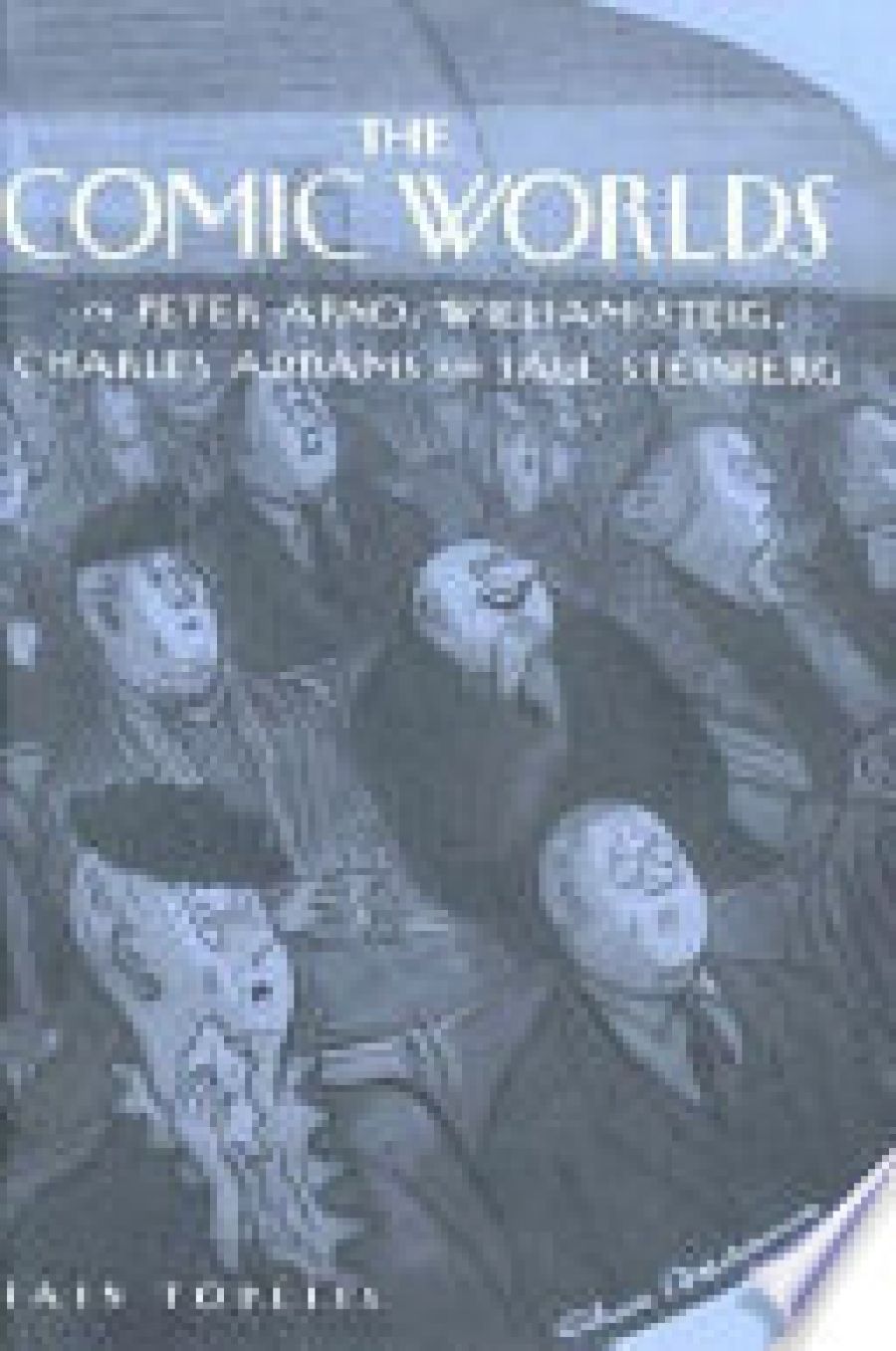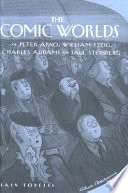
- Free Article: No
- Contents Category: Biography
- Review Article: Yes
- Article Title: Duel in Manhattan
- Online Only: No
- Custom Highlight Text:
More so even than The Age, the New Yorker is a journal shaped and defined by its illustrators and cartoonists. For many decades it did not include photojournalism at all, and it only appears these days under sufferance. The cartoons contribute crucially to the ethos and style of a magazine that depends a lot on ethos and style. To think of the New Yorker is almost inevitably to think of the famous cover by Saul Steinberg that shows the cars, buildings, and people of Ninth and Tenth Avenues filling the foreground, then the Hudson River marking the edge of the real, figurative world, beyond which New Jersey, Nebraska, Japan, and the Pacific Ocean are just names on a vaguely conceived map. Parochial universalism fuelled by an ironic sophistication is the ethos of this famous image, and a thread of continuity in the work of the four New Yorker artists profiled in Iain Topliss’s fine and sensitive book.
- Book 1 Title: The Comic Worlds of Peter Arno, William Steig, Charles Addams, and Saul Steinberg
- Book 1 Biblio: Johns Hopkins University Press, US$45 hb, 325 pp
- Book 1 Cover Small (400 x 600):

- Book 1 Cover (800 x 1200):

Cartoons being such easy things to read, some people have thought that they must be easy to write about, and have addressed them in a holiday spirit of release from the rigours of their ‘serious’ intellectual endeavours. Topliss knows better than this: ‘Cartoons are difficult to discuss because although they “reflect their times” it is not always clear how they do this or even what the phrase really means.’ He is trained as a literary scholar, and analyses images with the sort of aesthetic and cultural-historical care that mid-twentieth-century critics lavished on metaphysical poetry. If he errs at all, it is on the side of over-explanation, but that is far better than the cartoon anthologist’s tendency to expect the audience to ‘get’ cartoons shorn of the subtle contextual markers that make them so deeply and immediately intelligible in their original time and place.
The aim of Comic Worlds is apparently modest – to give a biographically based account of four of the most influential comic artists of the New Yorker’s first half century, Peter Arno (1904–68), William Steig (1907–2003), Charles Addams (1912–88) and Saul Steinberg (1914–99). The book certainly achieves this, and allows readers to evaluate the artists’ contrasting and, in some ways, complementary graphic and comic achievements. Arno came from New York’s gilded class and drew its denizens from the 1920s to the 1960s with a light yet corrosive wit that makes the high, philandering life look more vulpine than glamorous. Steig’s democratic temper brought the little people of New York into the house journal of their betters during the 1930s, and he pursued dreams of freedom from social, psychological and economic constraint through the 1960s and beyond. Addams, with his nearly domesticated cruelties, provided the most influential rendition of American gothic there was in the middle decades of the century.
Perhaps it is the immigrant from Romania, Steinberg, who provides the most panoptical version of the meaning of the New Yorker. The image is particularly useful for the way it illustrates the clash between commercial and high culture in the ‘world’ of the magazine.
This is a duel for the attention of the sophisticated reader, between the jumble of old world high-culture characters (Bovary, Bloom, Candide) and the angular new world of Kim Novak, the screen goddess of the moment. One figure has a greater cultural armoury, but also a greater burden, while the other’s cultural familiar is seductive but may be evanescent. While it would be easy to moan that the commercial world has since overwhelmed the profounder literary culture, and that we are fallen on dark days, the poise of the magazine and of its cartoons does not really support such a routinely curmudgeonly position. In the soul of the sophisticated middle class, who read the New Yorker to affirm their caste while being entertained and informed, this duel is always (and still) happening.
And this leads to the larger aim of this carefully and elegantly written book. It builds an image of the role of the New Yorker and its cartoonists in the cultural history of the globalising twentieth-century middle class. Throughout, it puts the cartoons in a commercial context – a perspective integral to their meaning in a magazine where the only visual competition came from the advertisements that paid the way of the sophisticated drawing and writing. As Topliss says of the magazine’s audience: ‘This is an élite demographic group for which consumption is lifestyle and lifestyle is self-fashioning.’ So, while we get exemplary accounts of four major comic artists in Comic Worlds, we also get a vision of the social and cultural world they negotiated with their elegant lines.


Comments powered by CComment